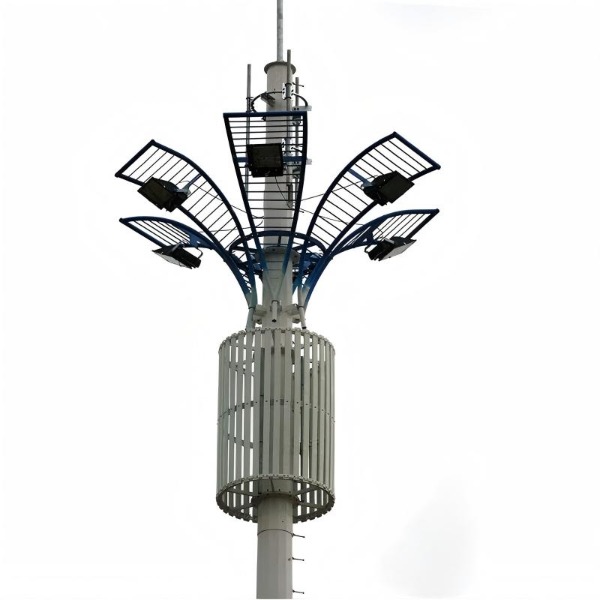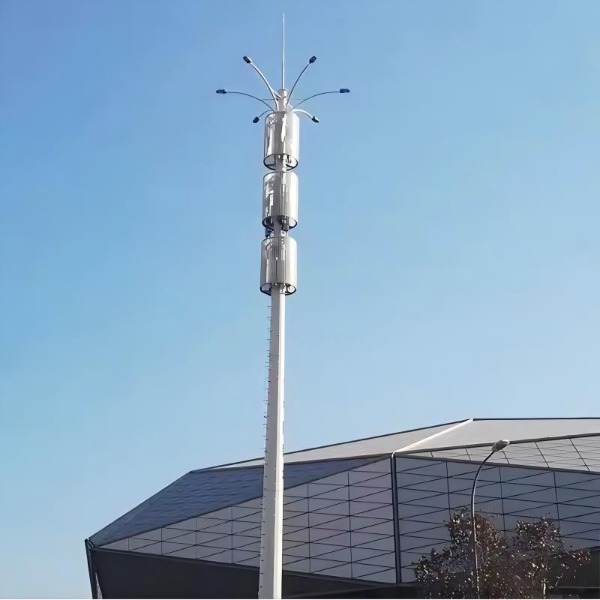The relentless expansion of wireless networks presents a unique challenge: how to place essential telecommunications infrastructure in locations where visual impact is a primary concern. From historic districts and scenic parks to upscale urban developments, conventional towers are often met with resistance from communities and planning boards. The solution lies in marrying structural strength with visual subtlety. Stealth monopoles, designed to blend seamlessly into their surroundings, have emerged as the ideal platform for deploying networks in aesthetic-conscious environments without compromising on performance.

The fundamental strength of a monopole lies in its simplicity. A single, tubular steel structure provides several inherent advantages for stealth applications:
· Structural Integrity: Their robust construction can support the additional weight of decorative elements and withstand significant wind loads.
· Minimal Footprint: A small ground space requirement allows for installation in constrained areas where lattice towers would be impractical.
· Clean Slate: The uniform cylindrical surface serves as a perfect base for attaching various camouflage materials and textures.
· Proven Durability: Hot-dip galvanized steel ensures a long service life with minimal maintenance, even when the structure is partially concealed.
The versatility of monopoles enables them to be transformed into virtually any aesthetic form. Two of the most successful applications are pine tree monopoles and streetlight monopoles.
This is arguably the most recognized form of stealth tower, perfectly suited for parks, forested areas, and mountain regions.
· Realistic Design: High-quality monopines feature individually attached "branches" and "needles" made from UV-resistant, colored polymers. These elements are arranged in a natural, asymmetric pattern to avoid the "lollipop" effect of early designs.
· Technical Integration: Antennas and RRUs are strategically housed within the central trunk or disguised within the foliage cluster at the top. The materials used for the faux foliage are RF-transparent, ensuring signal transmission is not impeded.
· Structural Consideration: The added wind load of the branches and needles is carefully calculated in the initial engineering design to maintain stability.

Ideal for urban streets, parking lots, and pedestrian areas, this design turns necessary infrastructure into a community asset.
· Dual Functionality: The structure serves as both a telecommunication host and a functional streetlight, providing public lighting while concealing antennas within its upper section or a non-metallic shroud.
· Aesthetic Flexibility: Designs can mimic traditional, contemporary, or decorative lighting styles to match the existing urban furniture of a specific district.
· Space Efficiency: This approach eliminates the need for separate structures for lighting and communications, maximizing the utility of a single footprint.

The potential for camouflage extends far beyond these two common types. Creative engineering and design have led to:
· Flagpoles: Particularly effective for government buildings, schools, and corporate campuses.
· Architectural Features: Blending into building cornices, clock towers, or church steeples in historic districts.
· Water Towers: A logical and visually coherent disguise in rural or industrial settings.
· Cacti and Other Flora: Region-specific designs for desert environments.
Creating a successful stealth monopole requires more than just a convincing exterior. It demands rigorous engineering:
· Advanced Load Calculation: The structural design must account for the combined load of the antennas, RRUs, and the camouflage system itself, including increased wind drag from faux foliage or shrouds.
· Material Science: The camouflage elements must be durable, weather-resistant, non-corrosive, and, most critically, RF-transparent to prevent signal degradation.
· Custom Fabrication: Each project is unique, requiring close collaboration between structural engineers, fabricators, and often artists or designers to achieve a site-specific solution that satisfies both technical and aesthetic zoning requirements.

The investment in a stealth solution delivers significant returns:
· Community Acceptance: Dramatically increases the likelihood of project approval from municipal boards and community stakeholders.
· Faster Deployment: Overcoming NIMBY ("Not In My Backyard") opposition and streamlining the permitting process can save months or even years in project timelines.
· Preserved Property Values: Maintains the visual and economic character of sensitive areas.
· Network Reliability: Allows for optimal network placement where coverage is needed most, rather than where a conventional tower is allowed.
Stealth monopole technology represents the perfect synergy of engineering pragmatism and aesthetic sensitivity. By transforming essential infrastructure into accepted—and sometimes even appreciated—elements of the landscape, they enable the seamless rollout of advanced wireless services everywhere they are needed. In the mission to connect the world, the ability to deploy network assets quietly and effectively is no longer a luxury; it is a necessity. The future of telecommunications infrastructure is not just strong—it is virtually invisible.
Learn more at www.alttower.com